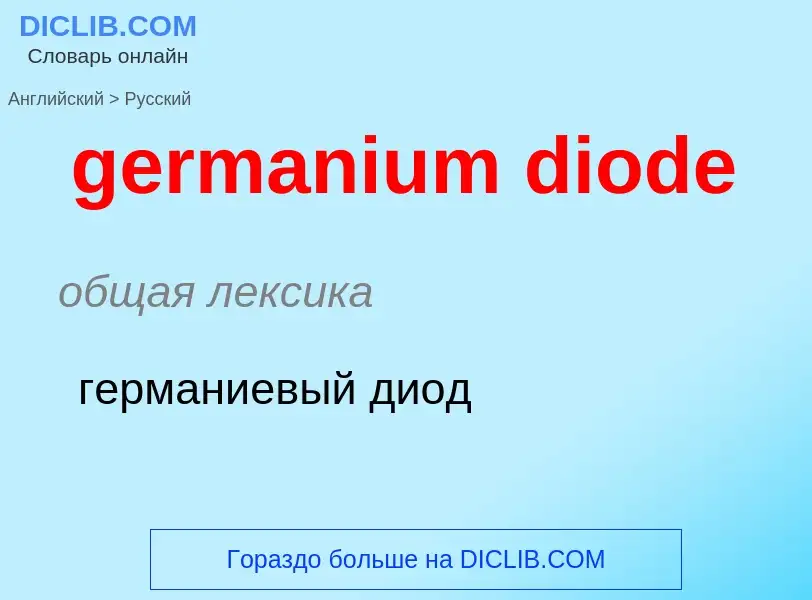Перевод и анализ слов искусственным интеллектом ChatGPT
На этой странице Вы можете получить подробный анализ слова или словосочетания, произведенный с помощью лучшей на сегодняшний день технологии искусственного интеллекта:
- как употребляется слово
- частота употребления
- используется оно чаще в устной или письменной речи
- варианты перевода слова
- примеры употребления (несколько фраз с переводом)
- этимология
germanium diode - перевод на русский
общая лексика
германиевый диод
общая лексика
плоскостной диод
машиностроение
диод плоскостный
Определение
Википедия

A diode is a two-terminal electronic component that conducts current primarily in one direction (asymmetric conductance). It has low (ideally zero) resistance in one direction, and high (ideally infinite) resistance in the other.
A semiconductor diode, the most commonly used type today, is a crystalline piece of semiconductor material with a p–n junction connected to two electrical terminals. It has an exponential current–voltage characteristic. Semiconductor diodes were the first semiconductor electronic devices. The discovery of asymmetric electrical conduction across the contact between a crystalline mineral and a metal was made by German physicist Ferdinand Braun in 1874. Today, most diodes are made of silicon, but other semiconducting materials such as gallium arsenide and germanium are also used.
The obsolete thermionic diode is a vacuum tube with two electrodes, a heated cathode and a plate, in which electrons can flow in only one direction, from cathode to plate.
Among many uses, diodes are found in rectifiers to convert alternating current (AC) power to direct current (DC), demodulation in radio receivers, and can even be used for logic or as temperature sensors. A common variant of a diode is a light-emitting diode, which is used as electric lighting and status indicators on electronic devices.





![[[Current–voltage characteristic]] of a p–n junction diode showing three regions: '''Breakdown''', '''Reverse''' biased, '''Forward''' biased. The exponential's "knee" is at V<sub>d</sub>. The leveling off region which occurs at larger forward currents is not shown. [[Current–voltage characteristic]] of a p–n junction diode showing three regions: '''Breakdown''', '''Reverse''' biased, '''Forward''' biased. The exponential's "knee" is at V<sub>d</sub>. The leveling off region which occurs at larger forward currents is not shown.](https://commons.wikimedia.org/wiki/Special:FilePath/Diode current wiki.png?width=200)

![doping]] level, leading to built-in potential of ~0.59V. Observe the different [[quasi Fermi level]]s for conduction band and valence band in n and p regions (red curves). doping]] level, leading to built-in potential of ~0.59V. Observe the different [[quasi Fermi level]]s for conduction band and valence band in n and p regions (red curves).](https://commons.wikimedia.org/wiki/Special:FilePath/PN band.gif?width=200)
